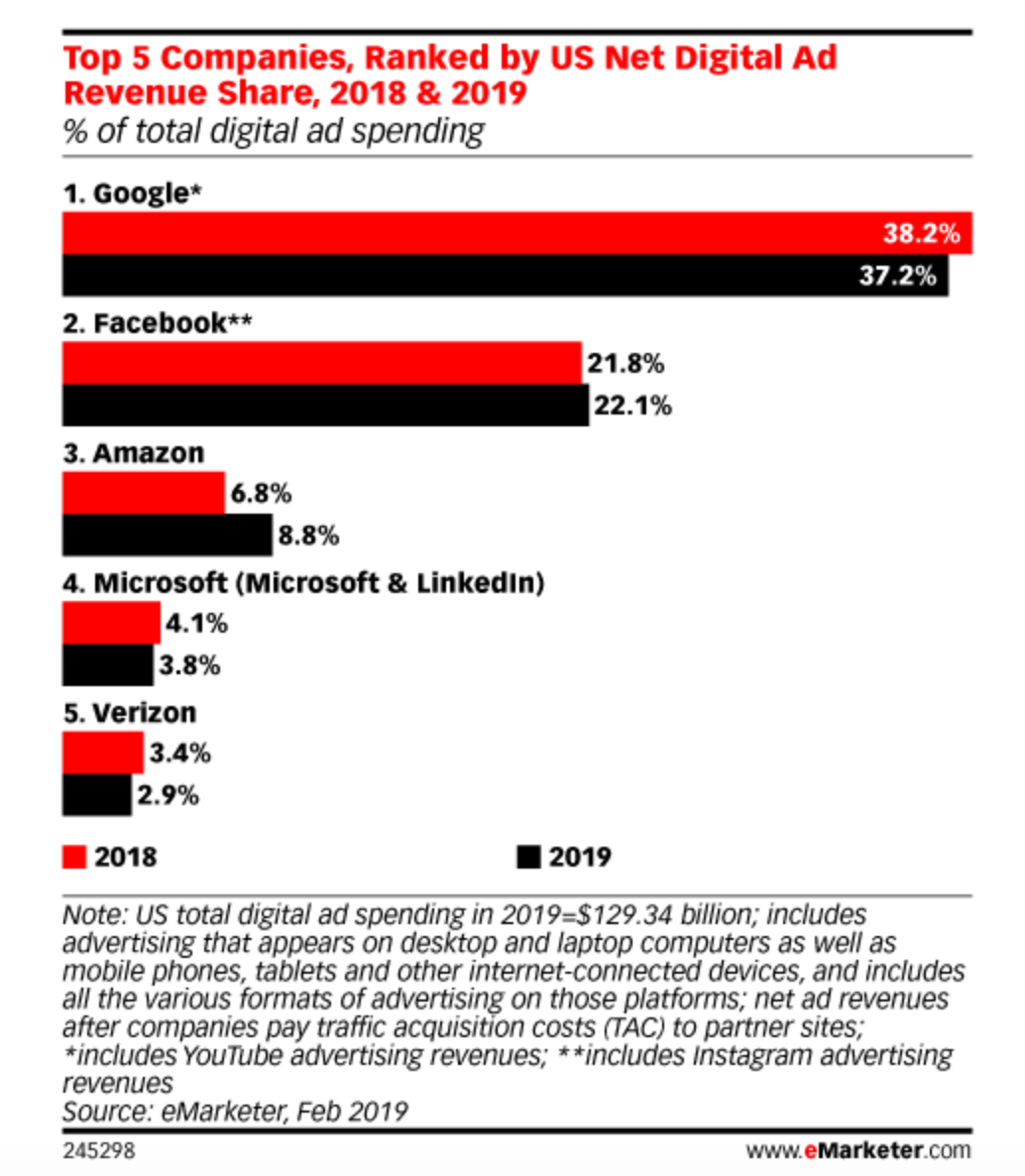Digital media brands had an eventful week with F8, Facebook’s yearly conference, happening on the West Coast, and the NewFronts, where digital media companies tout their new offerings, on the East Coast. Get excited, because you’re in for cool new ad units (I say this both sarcastically and not at all), lots more TV shows and new ploys to get our attention and wallets.
When you peel back the facade, what it boils down to is that every media company is trying to survive in today’s landscape (over 2,400 media people lost their jobs this year).
It seemed so simple just a few years ago, but with the proliferation of websites, TV shows, videos, apps, playlists, newsletters, etc. the competition to stand out is colossal. How colossal?
HBS professor Bharat Anand details this in his book The Content Trap: A Strategists Guide to Digital Change: "this is perhaps the most sobering statistic: five exabytes (or 5 billion bytes) of data could store all the words ever spoken by humans between the birth of the world and 2003. In 2011, five exabytes of content were created every two days."
On top of that, 75% of the $129B in yearly digital ad revenue continues to be gobbled up by the top brands as seen in the chart below.
So how does a digital media brand not only survive but also thrive in the face of today’s realities? By getting creative.
Some digital media brands are looking more like production houses and others are looking more like creative agencies. But the most fascinating of them all are the digital media brands like Complex and Refinery29 who are getting physical, launching yearly events that double as experiential museums, music festivals, speaker series and more.
These events are way more than just a pop-up—they have become a recurring part of culture that people anticipate, buy tickets to and wait in line for. Not only has this become a great way to diversify their revenue streams, but they've also found a way to develop deeper, more tangible connections with their audiences.
Complex launched ComplexCon in 2016, described as a "groundbreaking festival and exhibition that brings together pop culture, music, art, food, sports, innovation, activism, and education, a catalyst for creative collaboration between the most influential people and hottest brands that move our culture forward" drawing 60K+ attendees each year.
Celebs like Pharrell, Virgil Abloh and Jaden Smith make guest appearances and 200+ brands like Adidas, HBO and Old Spice build out mini-experiences on the floor, driving $25MM in revenue and 5B of earned media impressions.
I chatted with Kate Bracco, Senior Director of Brand Partnerships at Complex, who said, "ComplexCon allows Millennial and Gen Z markets to experience their favorite brands and passion points in real life—in unexpected ways. It not only is an additional revenue driver for Complex, accounting for an estimated 8%-9% of total 2018 revenue but serves as another touchpoint for consumers to engage with our youth culture brand."
Photo Credit: Gravillis
Refinery29 launched 29Rooms in celebration of their 10 year anniversary in 2015, and once they saw the insane response, have expanded it to four cities and are taking it international next year.
Described as "a vibrant community where culture, creativity and imagination are unlocked and celebrated year after year. Through our traveling tours and ever-changing spaces, new artists, partners, and visionaries continue to bring ideas to life through interactive installations, performances, workshops and more." Similar to ComplexCon, brands clamor each year to take part in this zeitgeist.
What's cool about this event is that it has become both a place of inspiration and also a platform for social themes like Women Empowerment and Self-Love. 29Rooms draws 60-70K attendees and 955MM earned media impressions.
Although R29 slightly missed their overall revenue goals in 2018, Business Insider reports from R29 CEO Philippe von Borries that "our 29Rooms franchise is one of the most significant successes in the past 18 months" and "the plan is to increase the non-advertising portion of the revenue and to get to profitability in 2020.
Photo credit: @29Rooms on Instagram
Other digital media brands are jumping on this bandwagon, like Bustle's Rule Breakers music festival and Barstool Sports' Classic, an amateur golf tour. When you take a step back, the lines are starting to blur between brand experiences and those like the insta-famous Museum of Ice Cream.
Are these companies on to something? Bryan Icenhower, president of experiential agency IMG Live, explains why physical connections with a brand are so powerful: “experiential engages all five senses, sparking emotions that form lasting memories which have been shown to drive brand loyalty."
But does it REALLY drive brand loyalty? A retail study by Motista uncovered that customers with an emotional connection to a brand will spend more money with the brand and that they have "306% higher lifetime value (LTV), stay with a brand for an average of 5.1 years vs. 3.4 years, and will recommend brands at a much higher rate (71% vs. 45%)."
Bringing this full circle, Bharat Anand reveals the crux of the content trap: it’s not about the amazing content you make, but the connections you create with your customers through content.
What does this all mean? There’s major value in creating a physical, immersive connection with your audience, especially for digital brands. What a brand was long ago is very different than what it is today because it can’t rely solely on selling a product anymore. Successful brands are way more than the product they sell—they are a set of values, beliefs, behaviors, mindset and identity—that you can experience both digitally and physically.



